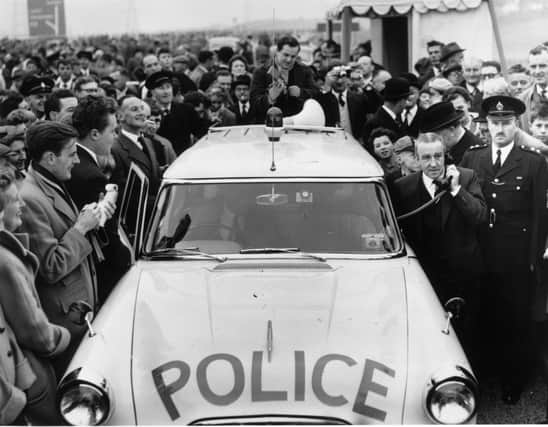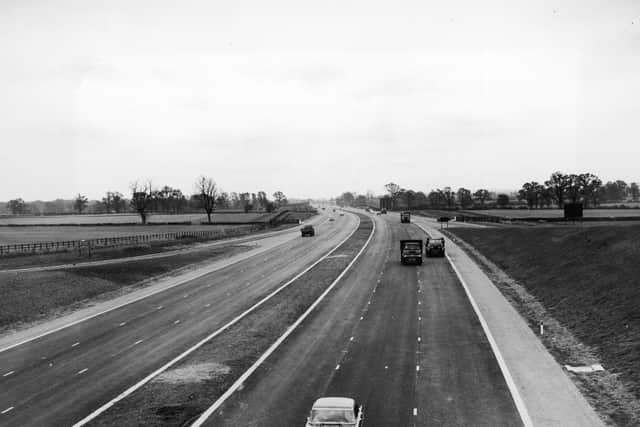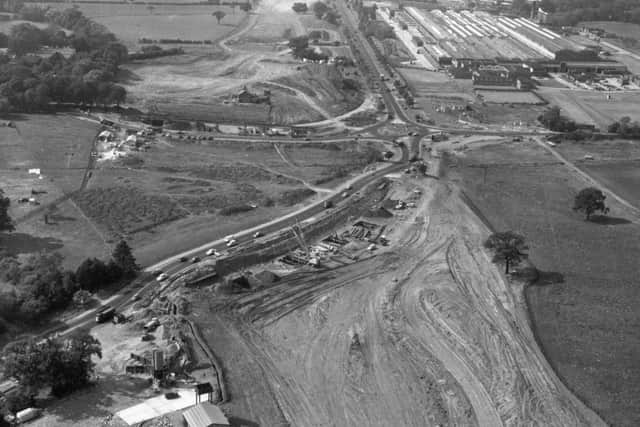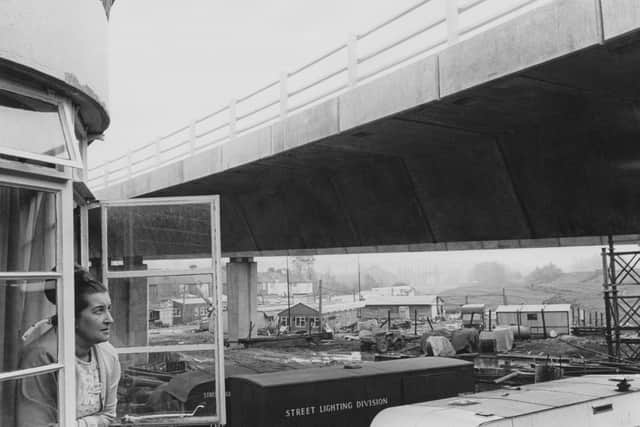Memories of motorway days out with neither traffic nor roadworks


The first US freeway, connecting Pasadena to Los Angeles, opened in 1940, and in the course of the next decade and a half, Austria, France, Belgium, Denmark and Poland could boast at least one stretch of motorway. Germany had more than the others put together.
But it was not until the end of the 1950s that the three-lane highways and blue signs which have been a feature of life ever since, became part of the British landscape.
Advertisement
Hide AdAdvertisement
Hide AdPlans had been drawn up during the war for a high-speed road network, but it took until November 1959 for the Transport Minister, Ernest Marples, to be able to declare open the first 72m section of the M1. He did so using one of the police’s new-fangled radio telephones.


It was not the country’s first such road – the eight-mile Preston bypass had opened the previous year – but it was the first time drivers could travel long distances free of traffic lights, junctions and, for the time being, roadworks.
It would be another nine years before the M1 reached Leeds.
By 1972 the network stretched to 1,000m, but it was the 1980s that were the boom years for construction.
In the early days, the highways were novelties in themselves, and it was not unusual for families to make day trips just to eat lunch at one of the service stations whose silver service restaurants overlooked the carriageway. Watford Gap in Northamptonshire, which opened on the same day as the M1, was the first of the new breed and became renowned as the point at which the south-east gave way to the Midlands.


Advertisement
Hide AdAdvertisement
Hide AdEditor’s note: first and foremost - and rarely have I written down these words with more sincerity - I hope this finds you well.
Almost certainly you are here because you value the quality and the integrity of the journalism produced by The Yorkshire Post’s journalists - almost all of which live alongside you in Yorkshire, spending the wages they earn with Yorkshire businesses - who last year took this title to the industry watchdog’s Most Trusted Newspaper in Britain accolade.
And that is why I must make an urgent request of you: as advertising revenue declines, your support becomes evermore crucial to the maintenance of the journalistic standards expected of The Yorkshire Post. If you can, safely, please buy a paper or take up a subscription. We want to continue to make you proud of Yorkshire’s National Newspaper but we are going to need your help.
Postal subscription copies can be ordered by calling 0330 4030066 or by emailing [email protected]. Vouchers, to be exchanged at retail sales outlets - our newsagents need you, too - can be subscribed to by contacting subscriptions on 0330 1235950 or by visiting www.localsubsplus.co.uk where you should select The Yorkshire Post from the list of titles available.


Advertisement
Hide AdAdvertisement
Hide AdIf you want to help right now, download our tablet app from the App / Play Stores. Every contribution you make helps to provide this county with the best regional journalism in the country.
Sincerely. Thank you.
James Mitchinson, Editor
Comment Guidelines
National World encourages reader discussion on our stories. User feedback, insights and back-and-forth exchanges add a rich layer of context to reporting. Please review our Community Guidelines before commenting.